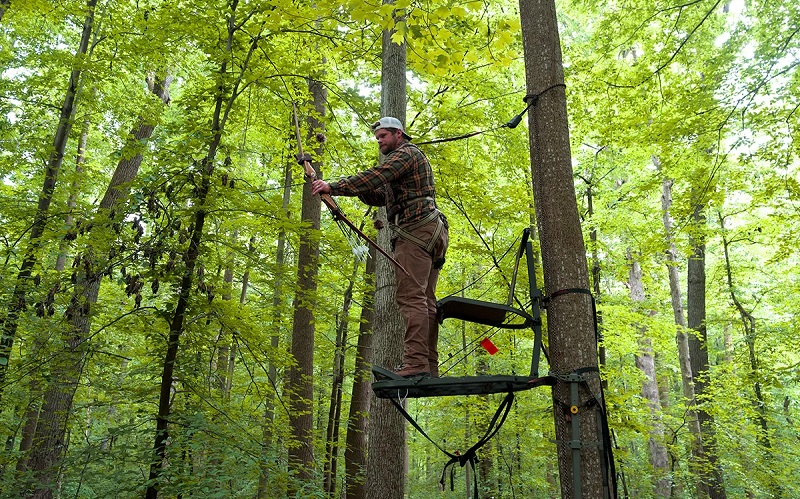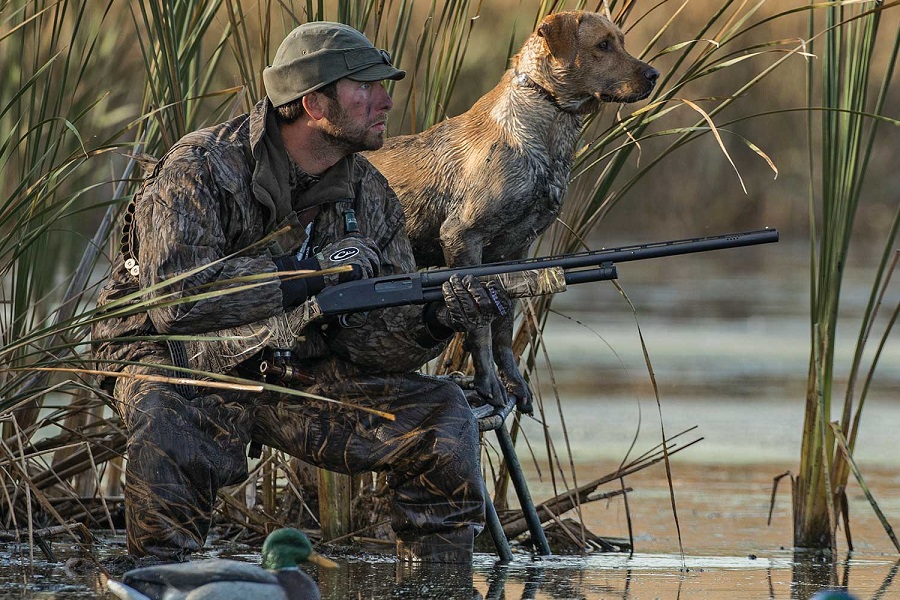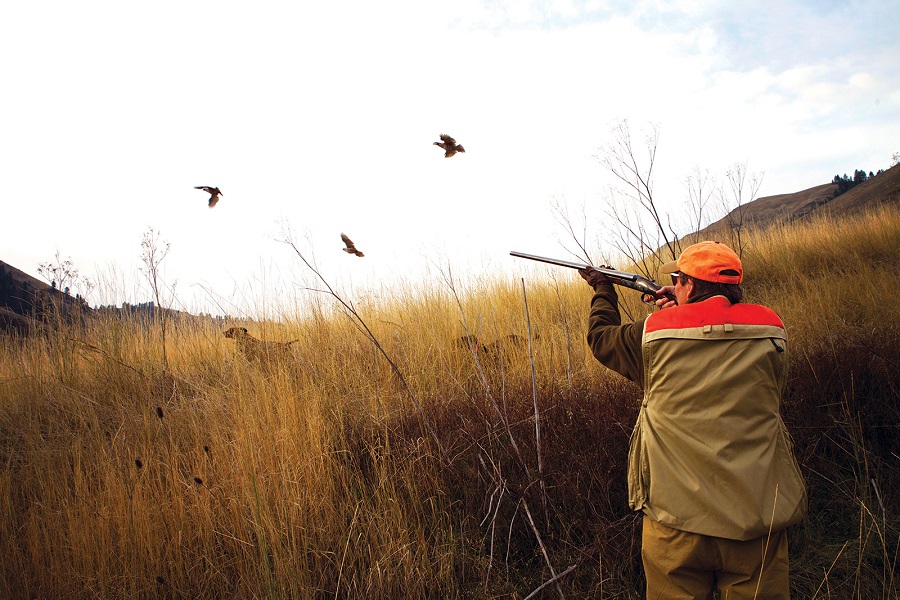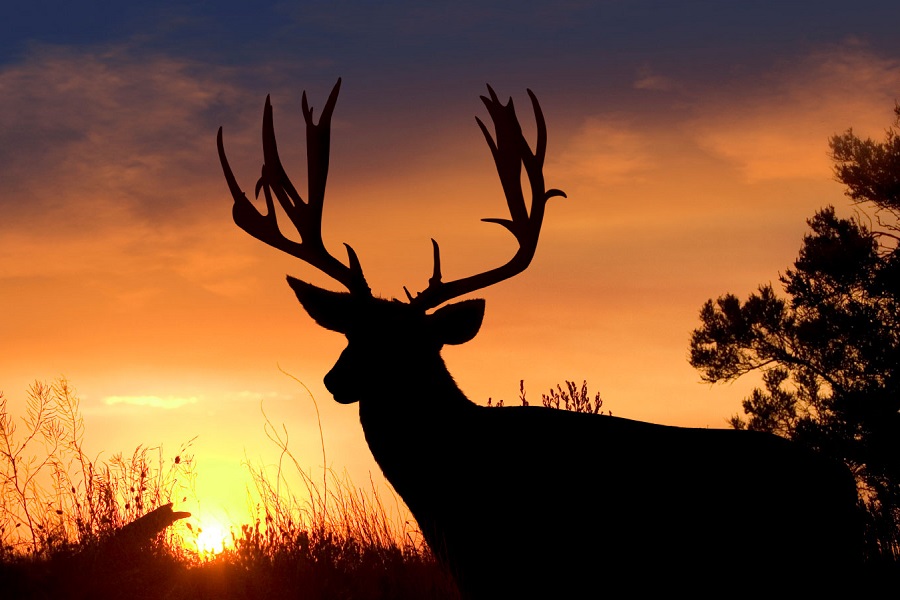There’s a different type of hunting that you’re not currently partaking in, and it’s going to get you more game than you can handle. It also poses greater danger, but there’s no reward without risk.
Tree stand hunting has a lot of working mechanisms that need to be aligned just right to really ensure things go off without a hitch, but that’s what you have us for.
The Benefits Of Tree Stand Hunting
There are a fair number of avoidable problems that you can have. Nearly everything comes down to your preparations, your attention to detail, and how focused you are on setting up a great stand. The benefits of tree stand hunting include:
- Easier to mask your scent from prey
- Stay out of line of sight of prey.
- More strategic positioning for a higher success rate
- Less fatigue than miles of walking
- You can leave them up and return to them next season.
They’re great once you learn what you’re doing. One of your biggest challenges with tree stand hunting will be placement. Don’t worry; we’ll cover everything you need to know about finding the right placement.
What Exactly is a Tree stand?
What is it? Ironic. Tree stands aren’t something you stand on, but rather sit on while you wait for prey to wander by. A tree stand usually consists of durable steel or corrosion-resistant coated metal, plastics or PVC, and various bits of nylon for straps.
They’re fastened to trees between ten and twelve feet off the ground using sturdy straps, and in some cases, they can be bolted or screwed into the tree trunk itself.
Tree stands give you a vantage point over prey (usually whitetail deer), so that you can stalk regularly visited spots that hunt while they are distracted while eating or drinking from nearby water sources.
They can come in two main forms, though there are also hunting tree stands and hunting tree houses. These are nowhere near as effective and are comically referred to as flask nests since you’ll be obvious to your prey and end up spending most of your time drinking to help the hours roll by.
How Do I Set Up A Tree Stand?

First things first: you need to figure out placement. It’s the most important thing. Even if you can fasten a tree stand to a tree with expert precision, if you put it in the wrong place, you’re going to actually drive away potential customers.
Placement should follow these basic rules. Scout out an area like this before deciding to camp in a tree.
- Height: A tree stand should be between ten and twelve feet off the ground. A deer’s line of sight isn’t that great; they can see far, but they don’t really look up. They don’t have any natural predators that attack from above, so there’s no reason for them to crane their necks back and look that way. Too high, and you’re going to risk major damage to yourself if you fall down. Too low, and they will see you.
- Have a good backing: You need a bit of visibility in front of you, but you also need the back of your tree stand to have some cover. If you’re at the base of a hill with your back facing the tree, deer could come down and see you from their heightened position. If you can turn your body in any direction and see a lot of the ground, then you’re not in a good spot. If you need to climb higher in the tree to make this happen, you can go up to twenty feet before it’s excessive. This is a height that is normally only used by bowhunters.
- Strategy: Before you can hang a tree, you need to know how to track your target prey. Whitetail deer are likely what you’re hunting, and it’s important to know how far they travel from the bedding area (no more than a half-mile), where the nearest water source is, and if it’s winter, look for tracks to determine their usual path. Deer will use the same path provided they run into no problems from predators and they need to eat and drink every day. It’s a good spot to stake out.
- From the Trail: You spotted a commonly travelled trail by your prey—excellent sleuthing skills—but now you have to make sure you’re not just hovering over that exact path. You want to be anywhere from ten to twenty-five feet back from the trail so you don’t startle the deer when they walk by. You have to think that they’re a non-dominant species; they’re always looking over their shoulders to inspect for predators and evade danger.
- Downwind: No matter how hard you try to mask your scent, you will inevitably have a hint of humanity on you. If you’re upwind, they’re going to be able to detect you. Deer have an incredible number of olfactory receptors in their nose—around 295,000,000, or 19% more than a bloodhound. When you’re downwind, your scent isn’t being carried towards them. This is something that’s a bit tricky to plan ahead for, especially if you’re planning on leaving your tree stand behind for the year. Do your best to position it and mask your scent.
- Triple Avenue: If you can position it properly, find a tree that has three plausible pathways below. This is not only good for you to escape from if you end up being targeted by a buck in heat or another animal, but it’s also great for spotting potential prey. You have three different ways that you can keep an eye out for prey and ensure that your dinner table is going to be full the next night.
- Accessible: This should go without saying, but you shouldn’t have to jump through hoops to get into your tree stand. All that’s going to do is rouse nearby deer when you struggle to get up and end up shaking branches and rustling leaves. Make it accessible so you can actually mount it properly.
Positioning is key. Picking the wrong spot means you’re not going to encounter prey for a long time, possibly the entire day. Now that you know how to find the right place to hang up your stand, it’s time to physically go through the motions of setting it up.
Once you’ve found the right tree, climb up to the desired height and position the stand. You should have received two straps with your tree stand, both of which will be positioned around the tree and tightened.
Your harness might come with a way to drive it into the tree trunk, or you might solely be focusing on tightening it. Those straps usually rest at a 45° angle to allow for natural pressure from your movements to actually aid them in staying up.
Pressure will push on the seat and stand when you’re in it, which will press against the tree, and the top section will push flush with the tree to provide stability while you maneuver yourself into it.
Once your straps are attached, tighten them appropriately. Before you actually hoist yourself into the tree stand, you should hang onto it slightly and put some of your weight on it. If it even moves slightly on the tree trunk, it isn’t positioned properly.
This is where all of your tree-climbing knowledge from being a child comes back to help you out. It is definitely tricky the first time around, but as you spot good trees to hang stands from, you’ll have an easier time hoisting yourself up into them.
What Are The Different Types Of Tree Stands?

You have a ladder, a fixed position, and hanging tree stands. There are tree-stand houses, but that’s a literal construction project that isn’t recommended to use anyway. There are a few distinct differences between each type, and depending on your preferences, you’ll be able to make your decision.
Hanging
You’ll also see these referred to as climbers. These are the most common types of tree stands that you affix to the tree and have to climb up to every time you want to position yourself in them.
These are okay for someone who is athletically capable, but they will be difficult for partially disabled hunters or those who aren’t in prime physical condition.
Hanging stands are inexpensive compared to ladders and fixed-position tree stands, but they require a little extra planning. You have to make sure there are strong, sturdy limbs for you to climb up on.
Without those, you’re not even going to be able to fasten this to the tree properly. These can take quite a bit of practice to get good at. You can get padded seats to help you with comfort, but do expect to get a bit restless in one of these.
You can spend six to eight hours up here before you actually encounter any viable prey. Hanging tree stands are preferred by hardcore, veteran hunters who want to bag their kill without even knowing what hit them. These give you the most stealth in the trees.
Ladder
Ladder tree stands are somewhere in between fixed positions and hanging. It acts like a hanging tree stand, but it’s more affixed to the tree and requires you to use a ladder to climb up and down. These are excellent if you’re in the business of leaving your stands up year-round and just returning when the season comes back.
The only problem is that they’re bulky and can sometimes weigh upwards of 100 pounds. You have to account for the pressure and stress on the ladder, and it’s bulky since the ladders are welded together in one big piece.
This makes it bulky as can be and difficult to set up, so you’ll definitely need another set of hands to get the job done. The benefit is that it’s easier to get up in the future.
But the downside is that it’s more visible than a hanging stand. You can camouflage the ladder to the best of your ability to make sure you don’t scare off prey, but it’s going to be a lot to do.
Setting up a ladder unit is like an all-day affair with how much you have to lug into the woods. It’s not discreet, so after setting up your ladder stand, you should immediately leave and not come back for a few days.
Deer in the area will note that it’s a dangerous spot, but without a hunter present, they will disregard it after some time.
Fixed Position
These lean against the tree, and while they’re still fastened to it, they stick out a bit. You can find plenty of manufacturers that try their best to camouflage them, but you can only camouflage a ten-foot-tall chunk of metal so well.
They’re conspicuous, but they’re also designed to remain on the tree for the entire season. You can wait it out and come back when the season rolls around again.
That is, if you don’t mind waiting. Once these are known to the local bucks, it’s going to be difficult to fool them again. You might do well to position the ladder away from the trail and position yourself so you’re looking over your shoulder.
Fixed-position tree stands aren’t the most popular, but they are one of the most expensive. You have to think about the additional materials that this takes to produce versus a hanging tree stand.
You won’t be leaving this transaction with much to your name to allocate to other hunting essentials. It’s something to consider.
FAQs
What Types Of Trees Are Best For Tree Stands?
Sturdy ones. The truth is, there’s no one tree that’s better than another. You should find one that has good backing, a view over the paths that deer take, and something you can be comfortable in. Personally, we believe that pine trees are more hassle than they’re worth since they’re covered in so much excess bark and sap.
Maple and oak trees are great to camp in, but they have slightly wider trunks that could be a bit difficult to strap your tree stand around. Each of these types has a fairly soft exterior that the straps will dig into quite nicely and keep your tree stand from moving or shifting while you’re sitting in it.
How Do You Pick The Right Tree Stand?
The right tree stand is going to give you enough leg room, and space for your feet, and not be dreadfully uncomfortable to sit in for the duration of your hunting trip. You have to remember that you could be spending as much as eight hours up here, so you want it to be a bit roomy.
You don’t want to cut off your circulation, so it’s best to find one that has enough room to stretch your legs without compromising your location. Depending on your height and size, you’ll either have a wide variety of basic tree stands open to you or you’ll have to suck it up and get a bigger tree stand just to accommodate.
Can You Leave Your Tree Stand Up?
Yes, you can, but it’s not necessarily a good idea. If you retain your hunting license and mark that it’s your tree stand, most parks will allow you to leave it up year-round. The thing is if you never caught that one buck or deer, they’re still going to remember that the tree stand you were in was a dangerous place.
Deer usually remain within a half-mile of wherever they sleep and rarely change positions. If you leave the tree standing, you could just be near the same prey as last year, which isn’t going to do you any favors. Deer can live for around ten to thirteen years in ideal conditions, and in some cases, up to twenty-five years. There’s a big chance that it’s going to be the same deer from last time.
You can move your tree stand’s position, but you’re going to want to move at least one mile away. There’s a slim chance that a deer in a neighboring bedding area also saw your tree stand, and while they might be confused about the changed placement, it could still work against you.
Calculated Hunter

Treestand hunting isn’t for those who just want a quick bag of game and to call it a day. Tree-stand hunting is for calculated hunters who want to outsmart their prey, who want to outplay them, and who want to emerge victorious.
You’re not afraid of being patient; you’re not too eager to wait for the right moment to strike, so you’re a tree stand hunter—it’s time to get out there and find your perfect spot in the trees, one with nature, ready for your moment to act.
Resources:



